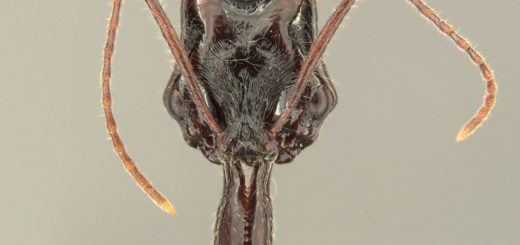A multi-level look at the social evolution of ant supercolonies

In the recent review “Supercolonies of ants (Hymenoptera: Formicidae): ecological patterns, behavioural processes and their implications for social evolution” by Heikki Helanterä published in Myrmecological News, Heikki revises the vast literature on ant supercolonies. Supercolonies are huge entities of interconnected nests without territorial borders, which have evolved in several ant clades and share similar features. Here, Heikki answers some questions about his recent publication.
An interview compiled by Roberta Gibson and Patrick Krapf

Featured image: Formica aquilonia (© Heikki Helanterä)
MNB: Could you tell us a bit about yourself?
HH: I’m a biologist from Finland and my main interest is social evolution in all its forms. I like to approach social evolution from many different directions, combining genetics, behaviour, chemical ecology, and theoretical approaches. Since my MSc project on reproductive conflicts over male parentage in Formica fusca, over the last 20+ years I have been fascinated with ants and Formica species have been my favourite study subjects. I currently work in Oulu in Northern Finland where I started in 2018 after many years in Helsinki. Luckily some Formica species live in the very North of Europe as well and I’m currently trying to establish my study areas in Northern Lapland. Amazingly beautiful, and loads of Formica exsecta there.
MNB: Could you briefly outline the research you published in Myrmecol. News in layman’s terms?
HH: I wrote a review on supercolonies of ants where I synthesize earlier literature on the topic and offer my views on interesting future directions and open questions.
Supercolonies are huge networks of interconnected nests without territorial borders that would separate different nests. Such supercolonies may span several kilometers, or hundreds of kilometers in populations that have spread through human actions, and are perhaps the largest animal societies known. Each nest also contains several queens, sometimes even thousands! They are thus very different from the kind of an ant colony people often think of, that lives in one nest with one queen and aggressively defends its territory against neighbours.
These supercolonies have many interesting features: they are ecologically dominant, but evolutionary theory predicts they might be vulnerable in the long term. This is because ant societies are based on cooperation among family members, but in supercolonies the family structures are broken and in such conditions evolution could lead to breakdown of cooperation. Many invasive pest species are also supercolonial, and their social strategy is a likely cause for their success as invaders.
MNB: What is the take-home message of your work?
HH: The study of supercolonial species needs to move away from studying just the biggest and most amazing supercolonies. In order to understand supercolonies, we need to understand why some of them grow large and some perish and what are the different ways how they compete. This includes the beginnings of new supercolonies, the growth and decline of supercolonies, and competition over queen recruitment within and between supercolonies. In other words, we need to understand the whole life spans of supercolonies. Obviously, this is a huge undertaking given the timescales involved, but in many cases, we can get parts of the big picture through experimental work.
MNB: What was your motivation for this study?
HH: In addition to always being very interested in supercolonies (they are common in my favourite Formica ants), there were very practical motivations. I felt, of course, honoured to be invited to write a literature review and was at a stage after establishing in my new job where I did not have many students to supervise or big projects to manage, so I thought it was a good time! Then the pandemic hit and we missed a field season, so I had plenty of time to catch up on the literature.
MNB: What was the biggest obstacle you had to overcome in this project?
HH: The sheer amount of literature to read and digest. When I started I thought I had a fairly good grasp on what’s out there but, of course, I was horribly wrong! It is a challenge to navigate and synthesise the literature in a way that avoids biases such as picking and choosing the examples that fit your favourite theories and leaving others out. I hope I have managed to represent the field in a balanced way. And so many interesting studies that could not be mentioned and cited due to space limits – my sincere apologies to all my colleagues whose work I’ve failed to incorporate.
MNB: Do you have any tips for others who are interested in doing related research?
HH: Write reviews! Find a topic that motivates you and is in need of a synthesis and maybe a fresh look. Of course, it is exciting in a different way than field or experimental work but I do find this kind of work rewarding. And don’t make the same mistake I did and write it as a single author. I have written reviews with both my students and my senior colleagues earlier, and it’s definitely more fun that way. So if you are a student, talk to your supervisor if you are interested in writing a review, and if you are a supervisor, encourage and engage your students in the reviews. I hope my students agree it has been worth it.
MNB: Where do you see the future for this particular field of ant research?
HH: As new cases of supercolonial species seem to be described quite regularly, I think our understanding of the diversity will increase. Combined with databases where life-history traits of ant species are compiled, I see a lot of potential in phylogenetic comparative analyses in the future, hopefully not too distant. And I hope the fruitful feedback between theoretical and empirical work that to me has been an important backbone of social evolution research continues, and we will have a much more thorough understanding of the evolution of dispersal, queen recruitment, and the associated conflicts. And of course supergenes (clusters of genes inherited together) underlying social traits are fascinating recent development to keep an eye out for!





Recent Comments